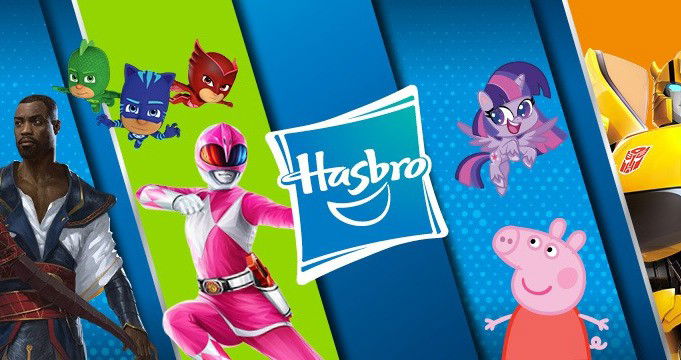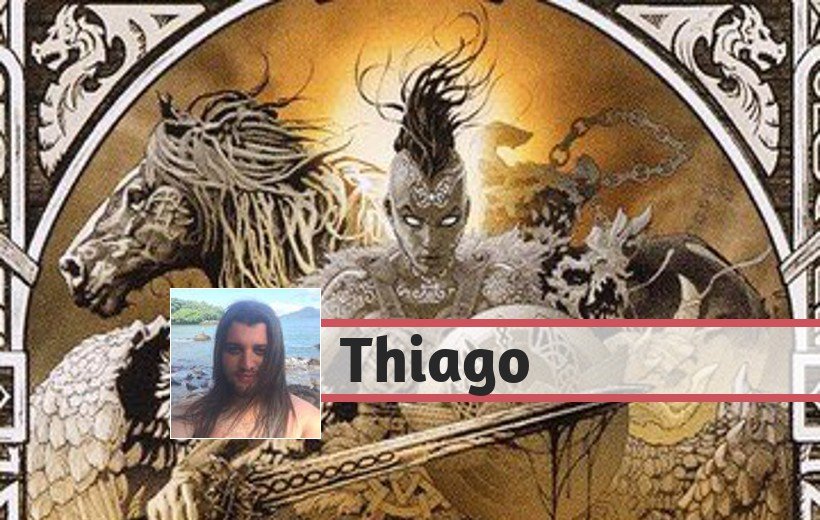Another week and another article. In this week's article, we'll talk a bit about Madness, the new aggro deck that has been establishing itself in the format after the profound changes brought about by MH2.
Last week I discussed some various possibilities of getting around the great bogeyman of the post-MH2 format, Ragavan, Nimble Pilferer. However, if not and, nevertheless, I committed a profound injustice and did not speak of the deck that has been showing itself a threat for the albino monkey decks in its most diverse variants.
Ad
As I need to correct this injustice, this week I'm going to dedicate the entire article to Madness, which as the name implies, is based precisely on the keyword of the same name and several forms of discard to clog up the board with creatures of all sizes, colors and flavors.
If that wasn't enough, Madness is a deck whose popularization in MTGO is quite indebted to the efforts of a Brazilian player, Vicente Mahfuz (MahfuzVanGogh), who gave us a brief interview about the deck that can be found at the end of the article.
Legacy's current Metagame
With just over a month and a half since the release of MH2, Izzet Delver is increasingly firmly established as the most played deck in the format. On a weighted average of available data from physical and online championships over the past two months, Izzet Delver verges on 15% of the format.
However, if we take these same data and look only at the last two weeks, Izzet Delver drops to 9% and Jeskai Ragavan Saga goes from 2 to 6%. Which is easy to understand when analyzing the list that combines a huge pack of removals with 3 Prismatic Ending and 4 Swords to Plowshares to a beautiful pack of cantrips with 4 Brainstorm], 4 Ponders and 2 Standstill, which often doubles as an Ancestral Recall, plus a powerful counterspell suite with 4Force of Will, 4 Daze and 3 Stifle.
If all that wasn't enough, the deck still combines Ragavan Nimble Pilferer producing tokens that are synergistic with Urza's Saga and Murktide Regent feeding on the vast graveyard produced by cantrips, counters, removals and fetchs.
In this field full of Tempo decks where creatures have been making a huge impact, one of the ways to win is to be faster and populate the battlefield with even more creatures than your opponents, and that's precisely what Madness does.
The Evolution of Madness
Madness has been making some results on MTGO for the first time before MH2 with the Brazilian player, Vicente Mahfuz. Here is his first list that made 5-0 in a League.
According to Vicente, the key to port Madness, a deck of which distinct HollowVine variants has been making great results in Vintage for some time, since both Hollow One and Vengevine can be abused with Bazaar of Baghdad) was Putrid Imp
This extremely recursive creature serves the purpose of beatdown, while allowing you to trigger all cards in the deck that have madness; in this version, we have Basking Rootwalla, Asylum Visitor, and Anje's Ravager.
The discard mechanic allows you to abuse Hollow One and Vengevine as well as allow Ox of Agonas to Escape faster. To do so, the deck still used four colors, so it could have access to Faithless Looting and Careful Study.
Perhaps the most interesting card in this list is the spot removal/direct damage Fiery Temper which allows you to speed up the clock and deal with threats.
With the advent of MH2 the format changed a lot. Madness earned the addition of Blazing Rootwalla and in the very first Challenge where the MH2 cards were already legal, we had a Madness in 12th place piloted by the player CVWX:
Ad
Here the deck undergoes profound changes and practically gains its current face.
Blue is eliminated and Madness goes into Jund colors. Your creature pack gets the addition of Blazing Rootwalla and Anger which allows the deck to be even faster and more explosive.
Regarding spells, the deck now has Burning Inquiry, which often, in addition to serving to trigger madness, also helps to disrupt opponents' hands, especially against combo.
The last noteworthy addition is Once Upon a Time which several times serve as a free spell, which allows for even more degenerate game starts. In mid and late game, OUAT works to get that missing mana to cast Faithless Looting with flashback or get a creature to repopulate the board.
On the sideboard, Bone Shards becomes a constant piece that abuses the discard mechanic while allowing it to deal with planeswalkers and creatures. Discarding an Anje's Ravager and killing a Murktide Regent at the same time can be the difference between victory and defeat.
Madness is increasingly establishing itself as an aggro option in the new format. Proof of this is its constant presence in the Top32 of the Challenges. Last week, player B-Baka came in 5th place in the Challenge playing Madness:
The deck has become less land intensive with most of the current lists using only 14, B-Baka also cut the third Anger to use 2 main deck Gamble, thus adding a multi-purpose tutor with an extremely synergistic application with all the deck's mechanics.
On the sideboard, Bone Shards and Firestorm remain as removals, Leyline of the Void has been replaced by Faerie Macabre, which can also be cast, becoming an evasive attack through the air or a blocker against a threat and Flaring Pain allows you to deal with a blocking True-Name Nemesis, while Pithing Needle helps stop one of Madness' worst matchups, the Dark Depths variants.
To round off our foray into the realm of Madness, I made an interview with the man who catapulted Madness from a fringe deck to a relevant aggro deck in the current metagame:
An interview with Vicente Mahfuz
John: The first question I was going to ask you and considering the version that made the top of the last Challenge, do you consider the Hollow One the worst of the creatures in the deck?
Vicente: Yes, in my opinion it is the worst creature on the deck. If it has Hollow One, the current version will have Anger necessarily.
João: Do you think the splash to blue is worth it? Is it worth losing aggression in such an explosive deck to have access to draw and counter?
Vicente: I splashed to blue before MH2, it was my first version of the deck (4 color), with Careful Study. I believe this first version, with blue, was the first that worked... I won several leagues with it and reached a top 20 in Challenge. After MH2, I prefer the Jund version. It has enough options to build the deck more aggressively.
João: What is the best and worst Madness matchup?
Ad
Vicente: Depths, it doesn't matter if it's Golgari os Selesnya. You can see in this Challenge list... there is no removal against Marit Lage, so you always want to be very fast. On my previous post-side list I would put 4 cards only against Depths, Run Afoul and would improve a lot when the hand came slower. The best matchups are blue decks in general, like Miracles or Delver.
João: Speaking of Run Afoul and Bone Shards that, I thought, were phenomenal, the only problem is Chalice of the Void, which already deals with many cards of the deck, right?
Vicente: Yes, but it's not the end of the world. Against decks that use Chalices, you change the mulligan strategy a little depending on whether you are on draw or on the play.
João: The lists locks 6 to 7 cards with Leyline and Mindbreak Trap, I saw many people using Firestorm which is super synergistic, what are you currently sideboarding now?
Vincent: Ancient Grudge is excellent against Chalice of the Void, and usually, it comes to one, so Lion's Eye Diamond looks wonderful. Firestorm is excellent against creature decks in general, or even Delver on draw. My side and mulligan strategy varies a lot depending on whether I'm on the play or on the draw.
When I suspect the opponent is playing Leyline of the Void, for example, if I'm on the draw, I take out the 4 Vengevine. The deck doesn't need the grave to win. I've won many matches because the opponent mulled after its grave hate, and I won with Rizowallas + Ravager.
Burning Inquiry is secretly the most misused card in the deck, in my opinion... Many people cast it on turn 1, even when there are better options. For example, a hand with Burning Inquiry as the only discard is bad. Now, if you have an LED in the field, or 1-2 lands, casting an Inquiry is a wonder.
John: It must be a delight to cast Burning Inquiry with 2 creatures with madness in hand and draw Hollow One.
Vicente: Yes, it's really great. Inquiry is generally good against combos, with a little luck, you can beat Storm, Show and Tell and Doomsday. It's great to see the opponent discard the combo. Inquiry is especially good on turn 2, if you can wait... Faithless Looting or Putrid Imp are better on turn 1.
John: The deck seems to be insanely fun. For anyone reading you at home, besides possibly being the only competitive deck in the format for 200-250 tix, why should people play with it?
Vicente: The deck is really fun and teaches other game logics, it's even educational. It's not enough to just fold your hand and hit, it depends a lot on the game situation and allows for many interesting questions.
When I built the first versions, my main idea was to test a HollowVine version for Legacy that was competitive (in Vintage it's been a competitor for a while). As we don't have Bazaar of Baghdad, testing the deck, I realized that the most natural way would be to expand the cards with madness. I saw some Moon Stompy lists using Anje's Ravager, but they lacked good enablers (some streamers' unsuccessful attempts were usually mono red lists, with Burning Inquiry and Faithless Looting or Gruul). As I came from a lot of experience with Dredge in Legacy, including victories in Challenges, I knew the strength of the Putrid Imp - no one had tested with black before.
Ad
Then the pieces came together, and today you can't play with less than 3 or 4 Imps in your deck. Besides being a mini-combo with Rootwalla + Vengevine (hopefully Hollow One too). And the deck will work great in any environment with multiple Delver, Miracles and Death & Taxes decks, as it usually does in Brazil!
João: Thank you for this interview!
Vicente: Thanks and good writing!
Conclusion
Madness is one of the cheapest options to play Legacy on MTGO, costing on average between 200 and 250 tix. One of the best-placed aggro decks in the current format and, moreover, a delight to play. A deck that challenges the player all the time and rewards those who make their learning curve.
If you like to play aggressively in a deck that abuses the combination of discard mechanics and the recursion of creatures that can enter the battlefield in different ways, then maybe the whisper of Madness is calling you.









— Comments0
Be the first to comment